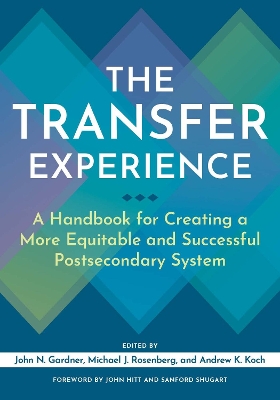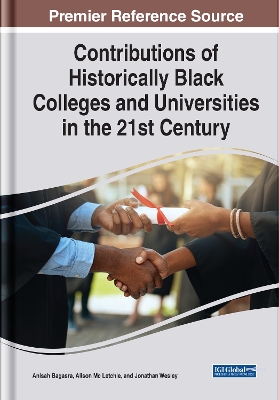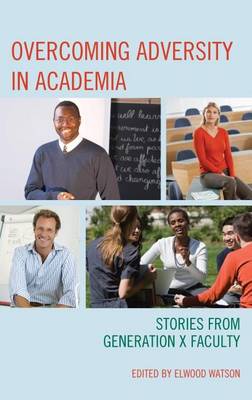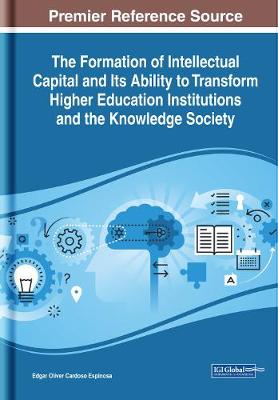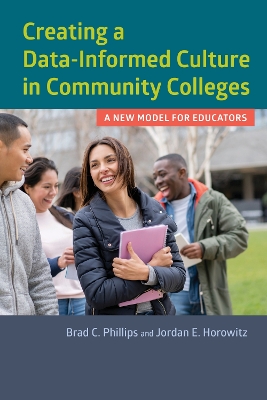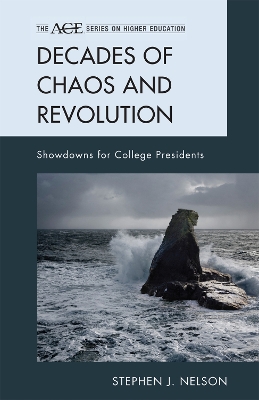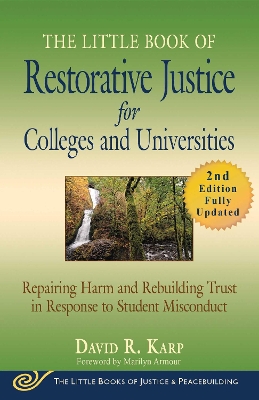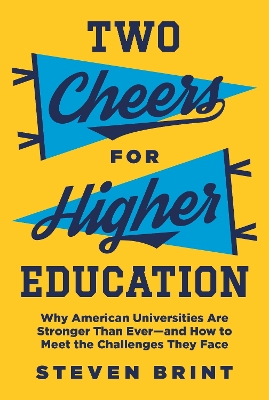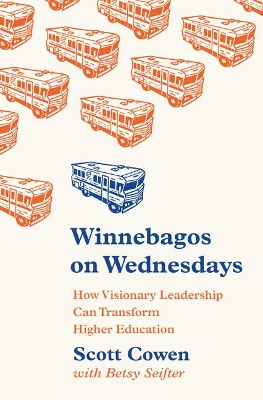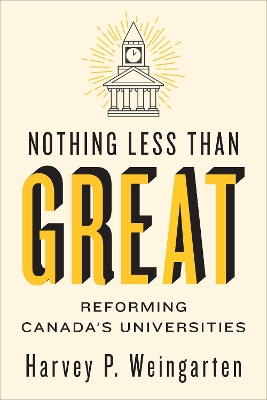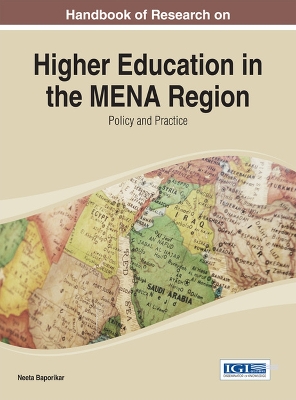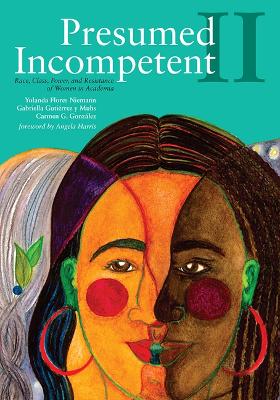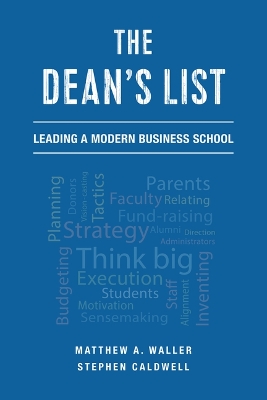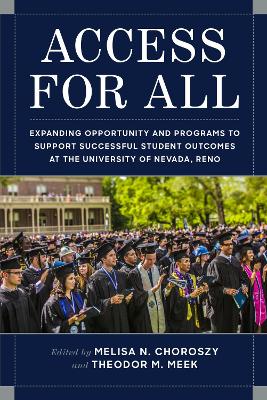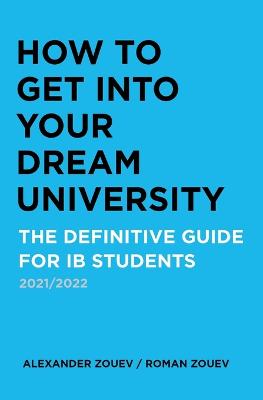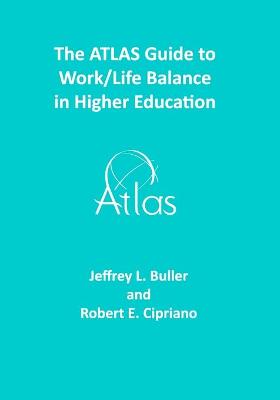Get Up & Move Academic Planner 2019-2020 (Pretty Student Planners, #7)
by Pop Academic
The Transfer Experience
Co-published with the Gardner Institute At last there is a handbook that everyone in higher education can use to help increase transfer student success. This comprehensive resource has been brought together to meet the need for a truly holistic approach to the transfer experience. The book brings together research, theory, practical applications, programmatic illustrations, case studies, encouragement, and inspiration, and is supplemented by an online compendium for continual updates of resourc...
Contributions of Historically Black Colleges and Universities in the 21st Century
Overcoming Adversity in Academia
by Professor of History Elwood Watson
The knowledge society arises from the combination of four interdependent elements: the production of knowledge through research, its transmission through education, its dissemination through information and communication technologies, and its exploitation through innovation. For this reason, higher education institutions (HEIs) are the main component of the formation of intellectual capital because they are the key element of the knowledge society, so it is necessary that they continue to be the...
Located within the global changing contexts of higher education in the 21st century, this book examines the reform of the teaching and learning practices in Vietnamese universities under the Higher Education Reform Agenda and the influence of internationalization on the higher education sector. Specifically, it analyses the motives, current implementation, effectiveness, and challenges of these reforms, especially from student perspectives. Analyzing approximately 4300 survey responses and inter...
Creating a Data-Informed Culture in Community Colleges
by Brad C. Phillips and Jordan E. Horowitz
Brad C. Phillips and Jordan E. Horowitz offer a research-based model and actionable approach for using data strategically at community colleges to increase completion rates as well as other metrics linked to student success. They draw from the fields of psychology, neuroscience, and behavioral economics to show how leaders and administrators can build good habits for engaging with data constructively. At the core of their approach is a strategic effort to help administrators and faculty identif...
Decades of Chaos and Revolution: Showdowns for College Presidents is the story and comparison of two eras in the history of higher education. The first era covers the period of the 1960s through the mid-1970s, and the second is the first decade of the twenty-first century. Both decades were marked by events that shook the foundations of colleges and universities, and society as a whole. Nelson weaves an engaging story, told through the eyes of the presidents of the institutions that were invol...
The Little Book of Restorative Justice for Colleges and Universities, Second Edition (Justice and Peacebuilding)
by David R. Karp
A Practitioner's Reference and Guide to Implement Restorative Justice on Campus Here's a call to colleges and universities to consider implementing restorative practices on their campuses, ensuring fair treatment of students and staff while minimizing institutional liability, protecting the campus community, and boosting morale, from an associate dean of student affairs who has put these models to work on his campus. Restorative justice is a collaborative decision-making process that include...
Two Cheers for Higher Education (The William G. Bowen, #117)
by Steven Brint
A leading expert challenges the prevailing gloomy outlook on higher education with solid evidence of its successesCrushing student debt, rapidly eroding state funding, faculty embroiled in speech controversies, a higher-education market disrupted by online competition—today’s headlines suggest that universities’ power to advance knowledge and shape American society is rapidly declining. But Steven Brint, a renowned analyst of academic institutions, has tracked numerous trends demonstrating their...
Why a strong mission and inspired leadership are vital to the success of America's colleges and universitiesIn 1998, soon after assuming the presidency of Tulane University, Scott Cowen was confronted with a setback. Despite an undefeated football season and putting the best financial deal on the table, Cowen was unable to retain the school's football coach. The coach wanted something the president didn't have--a football program so popular, as the coach put it, that fans would line up their Wi...
Canada's public higher education system is in trouble. The economic and social benefits of the Canadian university system are widely seen as a public good, which raises a pressing question: Why should we aspire to anything less than a great system? For that to happen, everything about the way universities currently operate, from the boardroom to the classroom, must change - but this kind of operational and public policy transformation will not be easy. Nothing Less than Great provides an exper...
A deanship in higher education is an exciting but complex job combining technical administration and academic leadership. On one hand, the dean is an institutional leader, standing up for the faculty, staff, and students. On the other, the dean is a middle manager, managing personnel, curriculum, and budgets and trying to live up to the expectations of the governing board, president, and provost. But what is it really like to be a dean?In How to Be a Dean, George Justice illuminates both of thes...
As the Middle East and North Africa (MENA) region becomes increasingly intertwined in the global economy, investment continues to be made in the educational sector. Multidimensional approaches to higher education have greatly influenced the state of business and government in the region. Handbook of Research on Higher Education in the MENA Region: Policy and Practice examines the need for a paradigm shift in the area of post-secondary education and innovation in the emerging, yet relatively und...
Low income and first-generation students comprise a significant portion of today’s college student population. The articles in this publication examine the various programs and strategies that are designed to support student success for these populations.
The ATLAS Guide to Work/Life Balance in Higher Education
by Robert E. Cipriano and Jeffrey L. Buller



